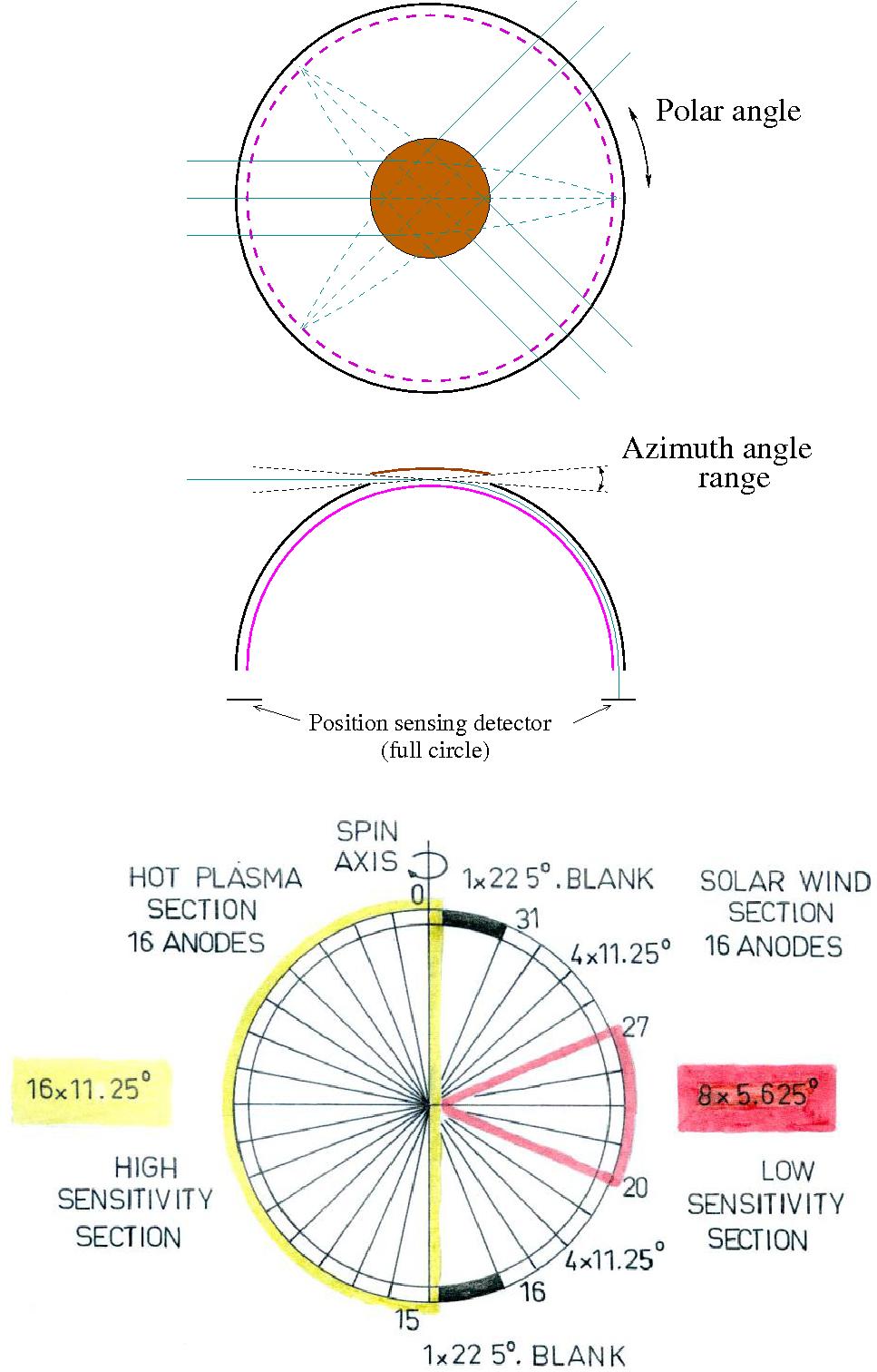|
The Hot Ion Analyser (HIA), part of the Cluster Ion Spectrometry (CIS) experiment onboard Cluster, has the objective to measure the three-dimensional velocity distributions of ions. The figure below (from Blagau et al. 2014) presents the HIA operational principles.
 |
HIA employs a 360 deg. angle imaging toroidal electrostatic analyzer (EA) and a fast detection system, based on MCP electron multipliers. The ions moving along different directions in the plane of the instrument entrance aperture (different polar angle in the upper part of the figure) are deflected and focused by the EA (middle part) on the exit plane, where are recorded by a system of position encoding discrete anodes (lower part). Ion energies from 5 eV to 32 keV are sequentially measured by rapidly varying in steps the voltage across the EA plates. For a better detection efficiency, the ions are post-accelerated by ~ 2.5 kV potential applied in front of the MCP. The MCP gain can be increased by stepping this high voltage. Coverage in azimuthal angle is achieved by using the satellite spin.
To accommodate the large dynamic range encountered in different regions, the entrance aperture consists of two narrow fans covering each 180 deg. in polar angle with sensitivities that differ by a factor of ~ 25. The high sensitivity (HS) section (entrance aperture on the right in the upper part of the figure), selects ions with the appropriate energy per charge and concentrates them on 16 anodes, located in the exit plane (on the left in the bottom part). This section is designed for analyzing magnetospheric ions. Similarly, the low sensitivity (LS) section (entrance aperture on the left in the upper part) is tuned for the detection of solar wind ions, i.e. for high ion fluxes with narrow energy and angular range.
|
The HIA detection efficiency depends on the particle energy and direction of movement (through the anode sector involved in the detection). The efficiency coefficients of the instruments have been determined on ground through extensive pre-flight calibrations. They are stored on-board and used by the processing software to compute the on-board moments (e.g. plasma density, velocity, pressure tensor) from the accumulated 3-D ion distribution function. However, the detector efficiencies change with time due to various reasons, e.g. MCP gain fatigue and aging, penetrating radiation, change in HIA operating point. Therefore, as the missions progresses, the on-board calculation are based on out-of-date / in-accurate efficiencies, prompting for continuous in-flight calibration.
The CIS experiment is prepared by an international consortium, under the principal responsibility of Institut de Recherche en Astrophysique et Planetologie (IRAP) in Toulouse (formerly Centre d'Etude Spatiale des Rayonnements). Since 2009, the Institute for Space Sciences in Bucharest assumed a key role in HIA in-flight calibration, in close collaboration with IRAP.
References
Blagau, A. et al. : "In-flight calibration of the Hot Ion Analyser on board Cluster", Geosci. Instrum. Method. Data Syst., 3, 49-59, 2014
Carlson, C. W. et al. : "An instrument for rapidly measuring plasma distribution functions with high resolution", Adv. Space Res., 2,67-70, 1982
Reme, H. et al. : "First multispacecraft ion measurements in and near the Earth's magnetosphere with the identical Cluster ion spectrometry (CIS) experiment", Ann. Geophys., 19, 1303-1354, 2001
|

